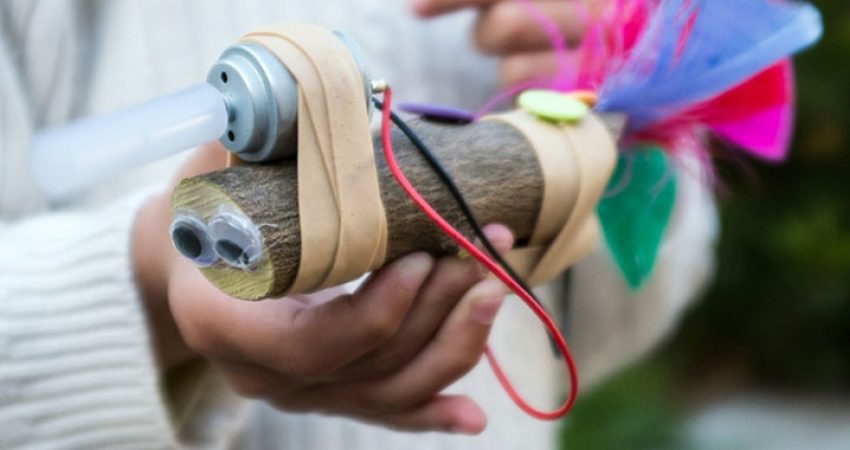
By Clea Matson - January 2014
PAPER CITATION
Jaakkola, T., Nurmi, S., & Veermans, K. (2011). A comparison of students’ conceptual understanding of electric circuits in simulation only and simulation-laboratory contexts. Journal of Research in Science Teaching, 48(1), 71–93.
This article makes a case for providing multiple types of hands-on resources to support learner inquiry. More specifically, in this study, activities with computer simulations of an electric circuit and with actual circuits complemented each other to support learners’ conceptual development. Learners made connections between their observations of the real circuits they constructed and the similar circuits they constructed in a simulation. When learners had the opportunity to use both simulated and real circuits, less structured guidance seemed to benefit the inquiry process. The benefit of implicit guidance was not as apparent when learners were working with the simulation only.
The article’s appendix gives examples of implicit vs. explicit guidance. In one example, implicit guidance asks participants to connect circuit elements in various configurations and observe whether the light bulb is on or off. Explicit guidance differs only in that it points learners specifically to the simulation, requesting that they notice and write down the direction of animated arrows indicating the direction of the flow of current.
Theoretical Basis
The intervention described in this article follows up on previous research on learning and teaching about electric circuits. Some previous research indicates that the combination of simulation and real laboratory experiences better supports conceptual development than do laboratory activities alone. Simulations make the abstract concept of electricity more visual. They can allow students to see and manipulate invisible processes, such as the direction of current, and so to more easily connect theory and practical applications (Ainsworth, 2006). Using two models also facilitates comparison. While the simulations are “perfect,” in real circuits, batteries may be drained and wires have resistance. Comparing the two types of models can help learners focus on principles or phenomena common to both (Gentner, Loewenstein, & Thompson, 2003).
Previous research on the effect of instructional support in inquiry learning showed that more structured environments focus learners and facilitate inquiry (de Jong & van Joolingen, 1998). This research was done with only one type of resource, either a simulation or a real lab activity. The research being discussed here sought to investigate the effects of different types of guidance when both simulated and real circuits were used. Previous studies favoring more structured guidance influenced the hypotheses framing this research. However, the results indicate that implicit (less structured) guidance is more effective in promoting inquiry when using both types of hands-on activities.
Research Design
To compare and contrast combinations of implicit and explicit guidance in activities using simulations and real circuits, the researchers assigned 50 fifth- and sixth-grade students to one of four conditions: simulation-explicit (SE), simulation-implicit (SI), combination-explicit (CE), and combination-implicit (CI). “Combination” activities are those in which learners worked with both simulated and actual circuits.
All students were given a pre-test and post-test. The two types of data reported were: 1) Learning efficiency, meaning the average change in score divided by the amount of time spent working on the activities; and 2) changes in students’ conceptual model of an electric circuit. To analyze conceptual changes, the researchers defined five categories of understanding of electrical circuits: four unscientific but commonly held mental models and the scientifically accepted Ohm model.
The researchers found that the groups who worked with the combination of simulated and real circuits showed greater improvement from pre-test to post-test scores. More students in the combination groups than in the simulation-only groups moved to more sophisticated mental models. In addition, the data showed that the CI condition resulted in higher learning efficiency: The students completed the activity in a shorter amount of time than did students in the CE condition, while experiencing the same apparent conceptual gains.
Implications for Practice
The researchers suggest that combining two complementary hands-on tools and providing implicit, procedure-only guidance can encourage learners to engage more fully with the tools to build their own understanding, expanding on previous knowledge and experience through self-guided inquiry.
Museum educators might implement this suggestion by positioning two hands-on exhibits—one simulated and one real—near each other. Another physics concept that might benefit from this treatment is the concept of sound waves. A simulation could make visible such concepts as longitudinal and transverse waves, wavelength, amplitude, and so on. The simulation could be accompanied by a real, hands-on activity in which students experiment with how the length or other characteristics (e.g. tension) of a tube or string changes the sound it produces.
Afterschool educators might apply this suggestion in a similar way, providing students with multiple representations of the same phenomenon side-by-side. It could be interesting to consider situations with even less guidance, where learners are simply allowed to play with complementary resources in a learning environment.
References
Ainsworth, S. (2006). DeFT: A conceptual framework for considering learning with multiple representations. Learning and Instruction, 16, 183–198.
Gentner, D., Loewenstein, J., & Thompson, L. (2003). Learning and transfer: A general role for analogical encoding. Journal of Educational Psychology, 95(2), 393–408.
de Jong, T., & van Joolingen, W. R. (1998). Scientific discovery learning with computer simulations of conceptual domains. Review of Educational Research, 68(2), 179–201.




